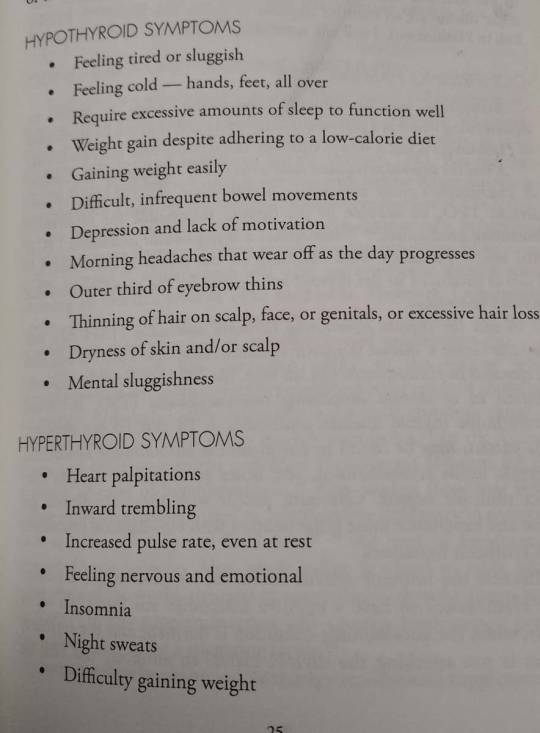#Blood disorders
Link
The UK has achieved a historic milestone by becoming the first country to authorize a revolutionary new treatment for two serious inherited blood conditions – sickle cell disease and beta-thalassemia. The cutting-edge therapy utilizes CRISPR gene editing technology to precisely correct errors in patients’ blood stem cells, potentially curing them of debilitating symptoms.
Announced earlier this week, the treatment called Casgevy (exagamglogene autotemcel) has been approved for use by the Medicines and Healthcare Products Regulatory Agency (MHRA). This landmark decision opens the door for this powerful gene editing approach to start benefiting eligible patients after final assessments by the National Institute for Health and Care Excellence (NICE).
Casgevy targets two blood disorders sharing an underlying mutation that reduces normal hemoglobin levels. Sickle cell disease distorts red blood cells into inflexible sickled shapes, causing severe pain, organ damage, and shortened lifespan. An estimated 15,000 people in the UK live with this painful condition.
Continue Reading
4 notes
·
View notes
Text

I. Polycythemia Diagnosis:
A. Clinical Assessment:
• The diagnostic process for polycythemia commences with a thorough examination of medical history and physical condition to detect signs indicative of erythrocytosis, assess potential risk factors (e.g., smoking habits, family history of thrombosis), and uncover underlying causes.
• Special attention should be given to symptoms of hyperviscosity syndrome (e.g., headaches, dizziness), skin manifestations (e.g., erythromelalgia), and signs of organ enlargement (e.g., splenomegaly, hepatomegaly).
B. Laboratory Tests:
• Laboratory investigations are crucial for diagnosing polycythemia and understanding its underlying mechanisms. Essential tests include a complete blood count (CBC) with differential, examination of peripheral blood smear, and measurement of serum erythropoietin levels.
• Additional tests, such as JAK2 mutation analysis, bone marrow biopsy, and molecular testing for other mutations associated with myeloproliferative neoplasms (e.g., CALR, MPL), may be necessary to confirm the diagnosis of PV and rule out alternative causes.
C. Imaging Techniques:
• Imaging methods like ultrasound, computed tomography (CT), or magnetic resonance imaging (MRI) may be used to evaluate organ enlargement (e.g., splenomegaly, hepatomegaly) and identify potential underlying factors for secondary polycythemia (e.g., renal tumors).
II. Polycythemia Treatment:
Management of polycythemia aims to alleviate symptoms, lower the risk of thrombotic complications, and prevent disease progression. Treatment approaches may vary depending on the underlying cause and severity, often involving a combination of strategies:
A. Phlebotomy (Venesection):
• Phlebotomy is the primary treatment for PV, involving the removal of excess blood to achieve target hematocrit levels (<45% in men, <42% in women).
• Regular phlebotomy sessions usually start at diagnosis and are adjusted based on individual response and disease activity.
B. Cytoreductive Therapy:
• Drugs like hydroxyurea, interferon-alpha, and ruxolitinib may be used in PV patients who do not respond to or cannot tolerate phlebotomy.
• These drugs work by suppressing abnormal hematopoietic proliferation and reducing the risk of blood clotting, with hydroxyurea being the most commonly used and studied cytoreductive drug in PV.
C. Antiplatelet Therapy:
• Aspirin and other antiplatelet drugs are often prescribed to PV patients with a history of blood clots or other high-risk factors to lower the risk of arterial thrombosis.
• Aspirin is usually started at low doses (e.g., 81 mg daily) and may be combined with cytoreductive therapy for better thromboprophylaxis.
D. Treating Underlying Conditions:
• Management of secondary polycythemia focuses on addressing the root cause to relieve hypoxia-induced erythropoiesis and prevent disease progression.
• Interventions may include oxygen therapy for patients with chronic respiratory problems, correction of hemoglobin disorders or other genetic issues, and surgical removal of erythropoietin-secreting tumors.
E. Lifestyle Changes:
• Lifestyle adjustments such as quitting smoking, maintaining a healthy weight, regular physical activity, and proper hydration are vital for improving clinical outcomes and reducing cardiovascular risks in polycythemia patients.
Doctors suggest undergoing regular health checkups for the early diagnosis and treatment of polycythemia. You can choose to undergo a regular full body health checkup at Jaslok Hospital Mumbai, which is one of India's best hospitals for the early detection and management of blood disorders.
#polycythemia#headache#dizziness#CBC#biopsy#splenomegaly#hepatomegaly#phlebotomy#cytoreductive therapy#hematopoietic proliferation#aspirin#antiplatelet therapy#hypoxia#respiratory problems#blood disorders#full body health checkup#regular health checkups
0 notes
Text
Low Carb vs Insulin Sensitivity
Hello my lovelies I am having an autoimmune flare presently and this has triggered the symptoms of Reactive Hypoglycemia (RH for short) as well. So it took several days before I could continue this blog post today. The flare I think was on its way a few days ago as I started waking up more than usual. My blood glucose which was fairly stable, started waking me up with autoimmune symptoms and…

View On WordPress
#alternative#Alternatives#anxiety#autoimmune#autoimmune disease#autoimmune health#autoimmune reactions#autoimmunity#belly health#Biology#Blog#blogger#blood#blood disorders#blood glucose#blood sugar#blood sugar levels#bowel health#Brain health#breathing#breathing problems#Carbohydrates#carbs#children&039;s health#chilli pepper#Chronic Illnesses#Cooking#Critical Illness Polyneuropathy#Diabetes#Diabetes management
0 notes
Text
Low Platelet Count: When Should You Worry?
If you notice prolonged bleeding from cuts, easy bruising, red or purple skin spots, bleeding gums, nosebleeds, or blood in urine or stool, you might have thrombocytopenia—a low platelet count. Learn about its causes, diagnosis, and when it's critical. Discover tips to boost your platelet count. By the end, you'll understand thrombocytopenia and when to seek medical help for a low platelet count.
When your platelet count is low, your blood's ability to clot is reduced. This makes even small injuries or internal bleeding more likely to cause prolonged or difficult-to-stop bleeding. Symptoms of a low platelet count can include excessive bruising, prolonged bleeding from cuts or wounds, nosebleeds, blood in urine or stools, and, in severe cases, spontaneous bleeding from the gums or internal organs.

Common causes of low platelet count, or thrombocytopenia, include:
1. Bone marrow disorders
2. Autoimmune disorders
3. Medications
4. Viral infections
5. Vitamin deficiencies
It's crucial to note that while these factors can lead to low platelet count, the severity and danger of thrombocytopenia depend on various factors, including the underlying cause and the individual's overall health.
A low platelet count becomes dangerous when it leads to a significantly increased risk of excessive bleeding or when it indicates an underlying condition that requires immediate medical attention. Symptoms such as prolonged bleeding from minor cuts, unexplained bruising, nosebleeds, blood in urine or stools, or spontaneous bleeding from the gums or elsewhere can indicate a dangerous low platelet count. If you experience any of these symptoms, it's essential to seek medical attention promptly.
To find out treatment and the normal count of platelets please visit: https://www.drkarunhematology.com/blog/when-is-low-platelet-count-dangerous/
Dr KK Hematology Clinic
No 3-9-242, 81, Siva Arun Colony, West Marredpally, Secunderabad, Telangana 500026
Facebook: https://www.facebook.com/DrKKCompleteHematologyCare
Youtube: https://www.youtube.com/channel/UC6icFvbjZt24SuRXoS-uwqw/featured
LinkedIn: https://www.linkedin.com/in/dr-k-karuna-kumar-4b20b8192/
Contact us: https://www.drkarunhematology.com/contact.html#
#aplastic anemia#leukemia#immune deficiency disorders#lymphoma#platelet disorders#sickle cell anemia#thalassemia#multiple myelomas#malignant disorders#blood clotting#blood diseases#blood disorders
0 notes
Text
The FDA has granted approval for the first gene therapies designed to treat individuals affected by sickle cell disease

- By Nuadox Crew -
Today, the FDA approved two groundbreaking gene therapies, Casgevy and Lyfgenia, as the first cell-based treatments for sickle cell disease (SCD) in patients aged 12 and older.
Casey employs CRISPR/Cas9 technology, editing patients' blood stem cells to increase fetal hemoglobin production, preventing sickling of red blood cells. Lyfgenia uses a gene therapy-derived hemoglobin to reduce the risk of sickling. Both therapies involve a one-time infusion of modified stem cells after chemotherapy.
Casgevy showed efficacy in preventing severe vaso-occlusive crises (VOCs) in 93.5% of patients, while Lyfgenia led to vaso-occlusive event (VOE) resolution in 88% of cases.
Side effects included low blood cell levels and mouth sores. However, Lyfgenia carries a warning for potential blood cancer development, requiring lifelong monitoring.
These therapies received expedited reviews and designations due to their significance in addressing severe health impacts.
--
Source: U.S. Food and Drug Administration (FDA)
Read Also
Study: Sickle cell disease 11 times deadlier than previously recorded
#fda#usa#sickle cell#blood#blood disorders#pharma#health#Casgevy#Lyfgenia#crispr#genomics#gene therapy#medtech#biotech#medicine
0 notes
Text
Hemophilia Treatment Market, Forecast 2027
Hemophilia Treatment Market
Hemophilia is a commonly inherited group of bleeding disorders in which there is a problem with the blood clotting process. It can reflect sudden bleeding, continuous bleeding after surgery, and injuries. It contains various clotting factors that help stop bleeding, if there is any mutation in these clotting genes that mutation can inhibit the clotting protein factor, necessary to form a blood clot.
Market Size & Growth Rate:
The hemophilia treatment was valued at USD 11.2 billion in 2021 and is projected to reach USD 19.6 billion by 2027, with a CAGR of 5.4% over the forecast period 2022-2027. The growth could be attributed to the return of demand to pre-pandemic levels, increasing authorization of novel & innovative medicines, extensive research, disease prevalence, and immunotherapies.
Click here for full report:
Market Dynamics:
The hemophilia treatment market is expected to witness significant growth due to the increasing incidence of hemophilia. some statics shoes its anticipated platform, for instance
According to WFH (World Federation of Hemophilia) data-2021, the estimated prevalence at birth and the current live birth population across the globe, approximately 20,000 new cases of hemophilia is reported worldwide each year, of which 7,000 are severe.
In addition, the estimated and present world male population of 7.8 billion, the anticipated number of patients with hemophilia worldwide is 815,100, and about 276,900 of them are seriously ill.
However, based on CDC data, the majority of people with hemophilia are diagnosed at a very young age in the US. In addition, the approximate age at diagnosis is 36 months for mild hemophilia, 8 months for moderate hemophilia, and one month for severe hemophilia
Click here for request free sample:
Market Drivers:
Increasing the demand for recombinant therapy
Amongst all, the recombinant therapy segment is estimated to hold the highest market share during the forecast period.
The manufacturing process of recombinant factor products is a laboratory methodology through recombinant technology. These products are not made from human blood.
Recombinant products are a safe and more effective method than plasma-derived products due to the low risk of blood borne infection
Increasing development and approvals of novel products in the recombinant segment for hemophilia. For instance,
In September 2021, Aviva Systems Biology Company launched its new protein-on-demand semi-custom recombinant protein portfolio for extensive research
In April 2020, LFB received FDA approval for Sevenfact [coagulation factor VIIa (recombinant)-jncw] for the treatment hemophilia
The growing prevalence of hemophilia A segment
The increase in research and development activities
Click here for full report:
Challenges:
The side effects of the medication are anticipated to hamper the market growth
The adverse effects of bleeding disorder therapeutics are anticipated to inhibit market growth during the forecast period. For instance, the use of coagulation factor concentrates in the treatment of hemophilia, it may enhance the alloantibodies growth that work against factor VIII and factor IX.
The growth of such alloantibodies occurs in around 15% to 35% of patients linked with hemophilia A. Although about 50% of factor VIII and factor IX inhibitors are in the lower range, high-range inhibitors can lead to the increased impact of hemophilia, resulting in a major risk of excessive bleeding to the patient
Moreover, treatment using plasma-derived products can increase the risks of transmitting blood-borne pathogens such as prions and HIV, if the screening process is not conducted appropriately.
The high cost of hemophilia treatment will hamper the growth of the market
Shifting to recombinant therapy solutions to replace the plasma derived therapy products
Competitive Landscape:
CSL Behring (U.S.), Grifols International (U.S.), Octapharma (Switzerland), Pfizer (U.S.), Biogen Idec, Xenetic Biosciences (U.S.), Sanofi (France), Cangene Corporation (Canada), Alnylam Pharmaceuticals (U.S.)Amgen U.S), Johnson & Johnson Services, Inc. (U.S.), Novartis AG (Switzerland), Akorn Operating Company LLC (U.S.), Bausch & Lomb Incorporated (Canada), AbbVie Inc. (U.S.), Prestige Consumer Healthcare Inc. (U.S.), Thea Laboratories (France), Wellona Pharma (India), Bayer AG (Germany), Zydus Group, Amneal Pharmaceuticals LLC (India), OASIS Medical (U.S.), Alcon (Switzerland), and Santen Pharmaceutical Co., Ltd. (Japan)
Key Developments:
Competitors in the global hemophilia treatment market are engaged in regulatory approvals, the development of new services, and acquisition & collaborative agreements with other companies. A few expansion strategies are adopted by players operating in the hemophilia treatment market
In February 2020, Novo Nordisk launched Esperoct, an anti-hemophilic factor in the U.S. for the treatment of hemophilia in adults & children with hemophilia A.
In March 2019, Biotest AG received regulatory approval from 13 European countries for its product offering for the treatment of Hemophilia
In December 2019, Bayer AG agreed to collaborate for three-year with the children’s hospital. “The development of small molecules to treat hemophilia” is the main motto of collaboration.
#Hemophilia Treatment Market#hemophilia treatment#bleeding disorders#clotting factor therapy#gene therapy#hemostasis#bleeding episodes#rare diseases#blood disorders#hemophilia research#patient care
0 notes
Text
Can immune thrombocytopenia be prevented?
Immune thrombocytopenia (ITP) is a complex autoimmune disorder characterized by low platelet counts. While it may not be possible to completely prevent ITP, there are some measures that can potentially reduce the risk or minimize the severity of the condition. Here are a few strategies:
Safety precautions: Avoiding activities that increase the risk of injury, such as contact sports, can help…
View On WordPress
0 notes
Text


Panchgavya Capsule -Immunity Booster
#Panchgavya Capsule#Balance Tri-dosh#Immunity Booster#Herbal Immunity Booster#Blood Purifier Medicine#Supplement for Immunity#Panchgavya#Immunity medicine in Ayurveda#Blood disorders
0 notes
Text
Co-dependent to the sickest degree or it’s not real.
#lovesick#obsessive love#possessive love#obsessive love disorder#bpd yandere#yandere vent#actually borderline#don’t look at him#I want to merge our blood
587 notes
·
View notes
Text
TW








fav thinspø atm❤️❤️
#ed not ed sheeran#tw disordered eating#tw s3lf harm#sh#tw ed but not sheeran#tw ed sheeran#ed behaviour tw#tw ana trigger#tw ed diet#thinspø#i need to lose this weight#i want to ⭐️ve#i wanna lose weight#i wanna ⭐️ve#i wanna be skinnier#i need to ⭐️ve#i need to be weightless#i need it#tw vent#tw blood#anatumblr#ana bllog#tw ana diary#bonespø#motivation
241 notes
·
View notes
Text

The Significance of Blood Tests in Addressing Vertigo:
1. Evaluation of Metabolic and Hormonal Factors: Blood tests serve as valuable tools for assessing metabolic parameters like blood glucose and electrolyte balance, shedding light on hormonal imbalances, particularly related to thyroid dysfunction, which contribute significantly to vertigo. Incorporating cutting-edge technologies, such as continuous glucose monitoring, holds potential for real-time insights into metabolic influences on vertigo. Additionally, examining hormonal fluctuations in various life stages, such as menopause, offers a nuanced understanding of vertigo triggers.
2. Understanding Anemia and Blood Disorders: The role of blood in oxygen transport is crucial for preventing vertigo, and conditions like anemia disrupt this process. A comprehensive examination, including a complete blood count (CBC), proves essential in detecting anemia and various blood disorders, providing insights into potential contributors to vertigo. Combining advanced imaging techniques like functional magnetic resonance imaging (fMRI) with blood tests offers a detailed understanding of physiological changes associated with anemia-induced vertigo. Exploring nutritional deficiencies, such as vitamin B12 and iron, enhances the comprehension and management of anemia-related vertigo.
3. Detection of Infections: Blood tests measuring parameters like white blood cell count and C-reactive protein (CRP) offer crucial insights into infections, guiding clinicians toward targeted treatment strategies addressing both the infection and associated vertigo. Advanced molecular diagnostics, including polymerase chain reaction (PCR) testing, enhance precision in identifying infectious causes of vertigo. Investigating chronic infections and their potential link to persistent vertigo symptoms adds depth to our understanding.
4. Assessment of Lipid Profile: Abnormal lipid levels, particularly high cholesterol, may compromise blood flow to the inner ear, contributing to vertigo. Lipid profile tests are essential in evaluating the cardiovascular health of vertigo patients, emphasizing the interconnectedness of systemic health and vestibular function. Exploring the impact of lifestyle factors on lipid metabolism broadens intervention possibilities for lipid-related vertigo.
5. Unraveling Autoimmune Contributions: Blood tests detecting antibodies associated with autoimmune conditions play a pivotal role in understanding autoimmune-induced vertigo, particularly in conditions like rheumatoid arthritis or lupus. Exploring immunomodulatory therapies and personalized treatment plans based on autoimmune markers provides insights into managing autoimmune-induced vertigo. Investigating the relationship between autoimmune vertigo and comorbidities adds complexity to our understanding.
6. Monitoring Drug Levels: Regular blood tests for drug levels ensure optimal therapeutic benefits without adverse effects, addressing the delicate balance between pharmaceutical management and vestibular health. Advances in pharmacogenomics hold promise in tailoring drug regimens based on individual genetic profiles to minimize medication-induced vertigo. Additionally, exploring the long-term effects of chronic medication use on vestibular function offers a comprehensive view of medication-related vertigo.
Doctors recommend undergoing full body health checkups, including blood tests and other essential tests, at regular intervals to detect and manage conditions such as vertigo early.
#blood tests#blood disorders#metabolic disorders#infections#autoimmune conditions#lipid profile#full body checkups#full body health checkups#regular full body checkups#regular health checkups#anemia
0 notes
Text
My Auto Immune Journey Reactive Hypoglycemia Hypothyroidism & Hashimotos Disease 2023
My Auto Immune Journey Reactive Hypoglycemia Hypothyroidism & Hashimotos Disease 2023 is the title of my blog post. An update as to what has happened to me since we spoke last. Unbelievably frustrating as you will find out... ❤️
For my dear family and friends who’ve been following my journey. I was diagnosed with Hypothyroidism in 2017. I was put on thyroid medicine, I was initially having regular blood tests to ensure I’m getting the correct dosage for me to be able to function normally. My former GP (an experienced semi-retired part-time GP who also taught other GPs) wasn’t sure what to say when I asked why did I have…

View On WordPress
#autoimmune#autoimmune disease#autoimmune health#autoimmune reactions#autoimmunity#Blog#blogger#blood#blood disorders#blood glucose#blood sugar#blood sugar levels#bowel health#bowel movements#bowel pain#Brain health#breathing#breathing problems#Bronchiectasis#children&039;s health#chronic disease#Chronic health#chronic illness#Chronic Illnesses#chronic stress#CIP#coeliac#coeliac disease#constipated#constipation
0 notes
Text





[Image one: The first page of a digital comic about Miles Morales from the Spider-Verse movies. It begins with two panels of Miles' face resting on his closed hand. The first shows him in his school, wearing his uniform. He looks bored. The second has him in his first, store-bought Spider-Man costume. The forest surrounding Alchemax is behind him. Both of the panels cut off around his eyes. Next to them is two smaller panels, one showing someone in a classic Spider-Man costume swinging on a web, while the other shows their feet flying through the air. At the bottom of the page, there's Miles' legs flailing as he falls during the Leap of Faith scene. A panel is behind them, in a purple halftone gradient. Shards of glass surround the legs like lightning bolts. The page says "you always thought that the scariest part of a leap of faith would be the fall".
Image two: The second page of a digital comic about Miles Morales from the Spider-Verse movies. The first part of the sentence says "but really... it feels like flying;". This is interspersed with close-up panels of Miles in his first black suit. There's one of his outstretched hand, one of his chest symbol, one very close to his eyes and another of his outstretched feet. Behind the panels, there's a rock pigeon mid-flight. The sentence continues with "floating;", followed by four panels of Miles floating as his fall is flipped upside down. The pose is identical in each, but the background gets gradually darker for each one. Then, "free in a way that feels unnatural -" is written, accompanied by a panel of Miles in his school uniform. You can't see above his lips and he's sweating nervously, shoulders hunched. Scribbles, like the portals on The Spot, crowd around him. The sentence finishes with "you love it". The final panel zooms into Miles' hand clutching his backpack strap. His Spider-Man suit peaks out of his sleeve.
Image three: The third page of a digital comic about Miles Morales from the Spider-Verse movies. At the top of the page is Miles' shoes stood on the side of a wall, one foot hanging over the edge slightly. Above it, it says "the fear is in the precipice -". Below the drawing, it says "the edge", alongside Miles standing on a wall from behind, cut off around the ankles. The sentence continues "and what you gaze at beyond it", the last two words in a bubbly black and white font over top of a purple halftone gradient panel. Then, the sentence finishes "(and what you're scared will slink back in)". On the left side there's two panels, one a close-up of Kingpin's tie, and the other shows The Prowler's cape laying in a pool of blood. The other side has two panels set out the same. The top panel has one of The Spot's portals, while the one below it shows Jefferson Davis' glasses discarded and broken, one lens shattered and bloody.
Image four: The fourth page of a digital comic about Miles Morales from the Spider-Verse movies. It begins with Miles' shoes, one planted on the wall while the other hangs is elevated, hanging over the edge. Two panels beneath it show his feet with one lowered slightly, and then both planted on the wall. They're accompanied by the sentence "the hovering moment where you can still simply step back". After this there's two different Miles, standing with their bodies facing the viewer but eyes facing each other. The first is taller, unmasked, and wearing his outfit from the rooftop party. His expression is pinched together, worried. The other is in his ill-fitting store-bought Spider-Man replica suit, body posed as if he's been caught by surprise. His eyes, from what is visible, are wide. Two panels separate them - one is completely black, while one has a spark of blue lightning bursting out of it. Finally, the sentence ends "... but then you'd just be there; waiting, doing nothing".
Image five: The final page of a digital comic about Miles Morales from the Spider-Verse movies. It starts with Miles' hand in the darkness, unfurling as he reaches out his index finger. Blue lightning sparks off of it, leaving his finger like a claw. This is surrounded by the line "and you can't let that happen,". Below that, Miguel O'Hara's gloved hand creeps towards Miles, curled and claws out, like he's just failed to grasp something. It is large compared to Miles, who is swinging through the air, looking back at the hand. His body is fairly loose. The page ends with the line "even if the first step is the steepest".]
looking down
#miles morales#miles morales fanart#across the spiderverse#across the spider verse fanart#across the spider verse spoilers#spider man: across the spider verse#spiderverse fanart#digital art#☆#blood#death#yippee!! did a comic again!!! yahoo!!#hopefully at somepoint ill finish this like 9 page one for a different number but im currently v busy 👍#anyway love miles sm mwah and the new film 💛💛💛💛💛#genuinely think he has an anxiety disorder <3#um sidenote i fucking hate drawing shoes why did i plan so many shoes for this 😭#if they dont look like real jordans dont come at me i emotionally gave up like midway through the first pair...
365 notes
·
View notes
Text




short comic adaptation of a scene from the haunting of hill house, done for my literature class
#i don’t normally share my homework stuff but hey why not#Nell you are so generalized anxiety disorder. god bless.#digital art#art#digital drawing#comic#sequential art#the haunting of hill house#shirley jackson#eleanor vance#cw blood
196 notes
·
View notes